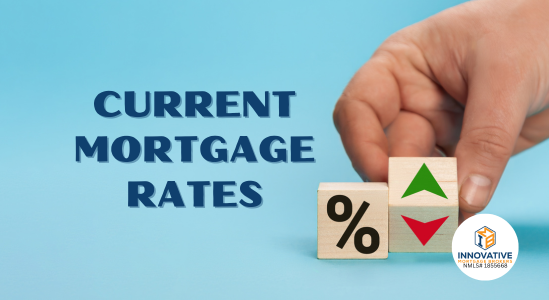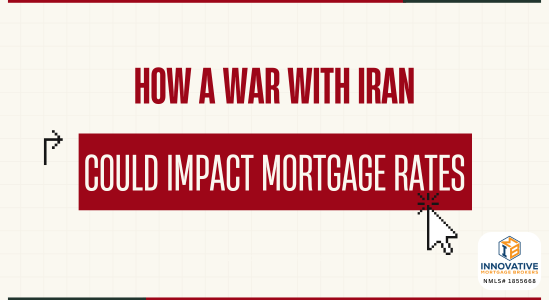As tensions between the United States and Iran continue to escalate, many prospective homebuyers and…
Mortgage Rates Rise After Worse Than Expected March Inflation Report
A Glimpse at the Current Landscape
As of this past week, the American dream of homeownership is becoming increasingly elusive for many, as mortgage rates continue their upward trajectory. The 30-year fixed-rate mortgage, a cornerstone of housing affordability, has seen a slight increase from 6.82% to 6.88% according to the latest data from Freddie Mac. On the other hand a year ago, the average 30-year fixed-rate was 6.27%. This incremental rise not only underscores the ongoing affordability crisis but also signals potentially higher rates on the horizon, possibly breaching the 7% mark—a threshold that could further complicate buying decisions.
The Underlying Factors: Inflation and Federal Policies
The Role of Inflation
Persistent inflation has been a driving force behind the rising mortgage rates. Despite the Federal Reserve’s efforts to manage economic stability, recent data reveals that price pressures remained staunch in March, casting doubts on the likelihood of reduced mortgage rates in the near future. This stubborn inflation is critical as it influences the Fed’s decisions on interest rates, which indirectly affect mortgage rates through the benchmark yield on the 10-year US Treasury note.
Federal Reserve’s Influence
While the Federal Reserve does not directly set mortgage rates, its policies significantly shape them. The current scenario where the yield on the 10-year Treasury note has soared to its highest since November at over 4.5% is a direct reflection of market anticipation of the Fed’s policy decisions. This connection highlights a complex interaction between long-term debt markets and short-term policy adjustments aimed at curbing inflation.
The Housing Market’s Response
Inventory Improvements and Affordability
Despite the bleak outlook on rate reductions, there is a silver lining with the potential improvement in housing inventory levels. According to the National Association of Realtors, a notable increase in available homes this February has slightly alleviated the pressure, providing a modicum of relief to prospective buyers. This increase in supply, if sustained, could be instrumental in offsetting some of the affordability challenges posed by higher rates.
Long-term Perspectives
For homeowners who secured lower rates prior to the Fed’s rate hikes in 2022, the incentive to sell has diminished, thereby straining inventory levels. However, recent trends suggest a gradual shift with more homeowners considering listing their properties, possibly encouraged by increasing home values and a more dynamic market environment. However, one key to remember, the ones that will be selling their current home, also need to buy one, thus not significantly changing inventory levels.
Looking Ahead: Potential Federal Interventions and Market Adaptations
Government Initiatives
In response to the housing supply crisis, President Joe Biden has proposed several initiatives, including tax credits for homebuyers and new homebuilding projects. While these measures promise some relief, their actual impact will depend heavily on legislative support and the timely implementation of these initiatives.
The Critical Balance of Supply and Demand
Ultimately, the core issue remains the supply-demand imbalance in the housing market. Even if interest rates stabilize or decline, the fundamental challenge of inadequate supply relative to demand continues to push homeownership out of reach for many Americans. Addressing this imbalance is crucial for truly overcoming the affordability crisis.
Strategic Considerations for Prospective Homebuyers
Navigating the current mortgage landscape requires a strategic approach:
- Locking in Rates: For those in a position to buy, locking in a rate amidst rising trends might be wise.
- Exploring Various Loan Options: Considering different types of mortgage loans, including FHA, USDA, and Non-QM loans, can provide alternatives that might offer better terms.
- Staying Informed: Keeping abreast of market trends and federal policies will be key in making informed, timely buying decisions.
As we monitor these developments, the path to homeownership remains complex, intertwined with economic indicators and policy directions. Prospective buyers should remain vigilant, seeking opportunities to capitalize on momentary dips in rates or improvements in inventory.
Innovative Mortgage Brokers remains committed to assisting clients through these turbulent times in Pennsylvania (PA) and Florida (FL), ensuring that the journey to securing a home is as smooth and affordable as possible. For personalized advice and detailed market insights, consider reaching out to us so we can guide you based on your unique financial circumstances and homeownership goals. Being a homeowner is exciting and rewarding once you get past the purchase and the mortgage challenge. We are here to help.





